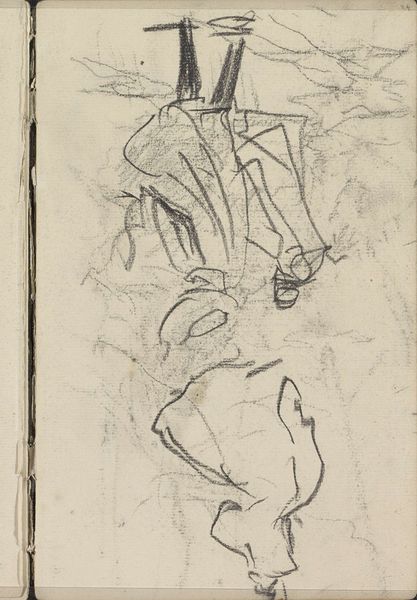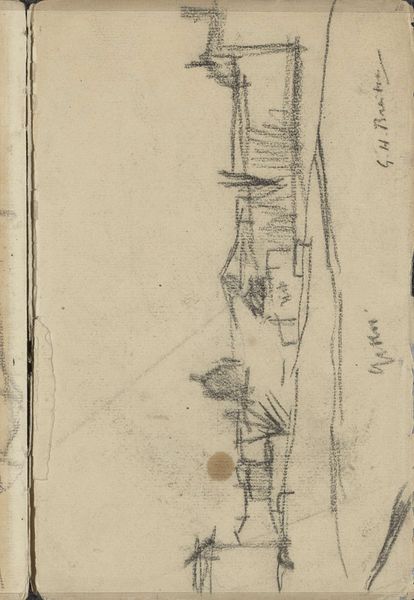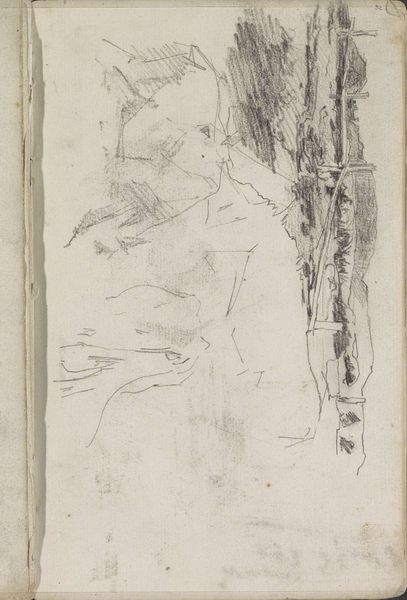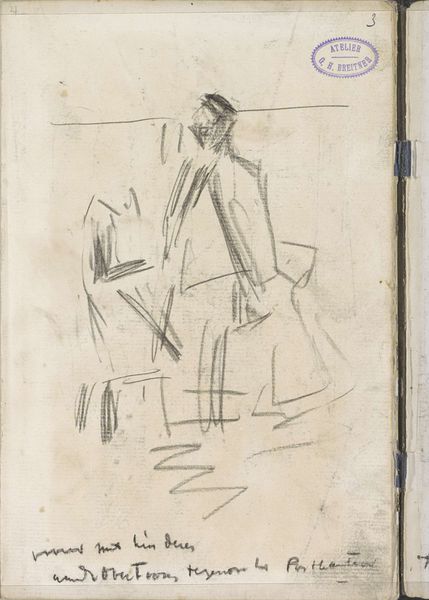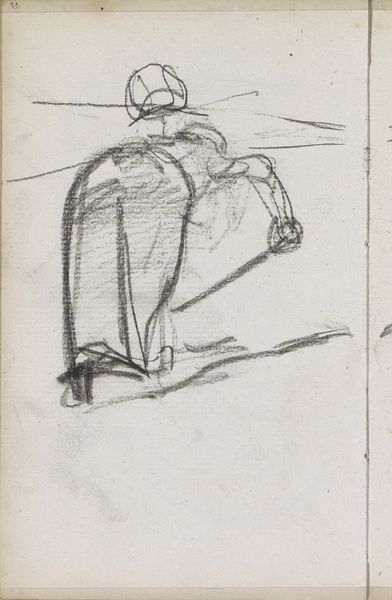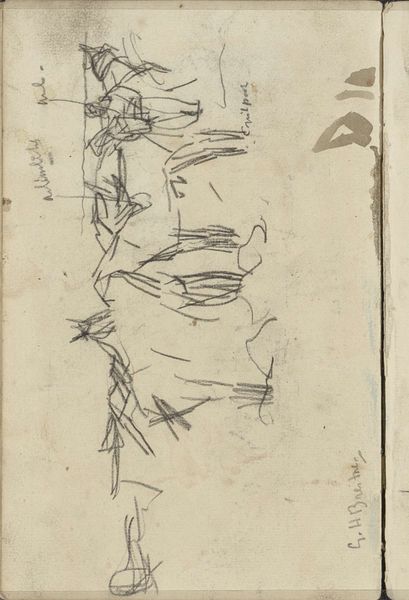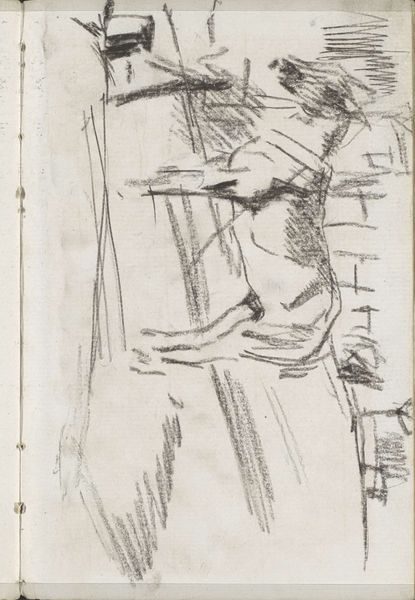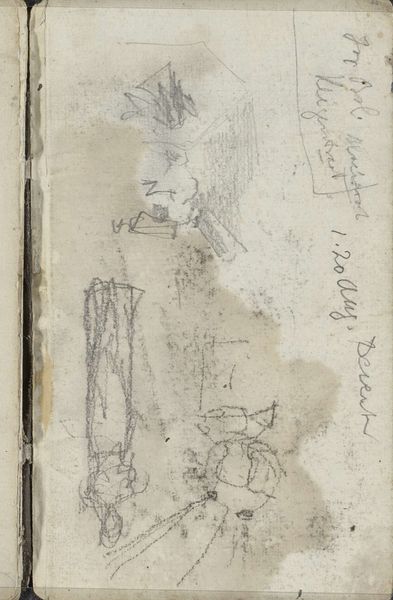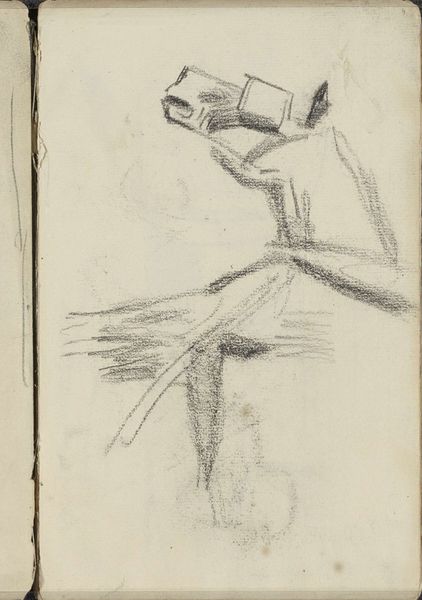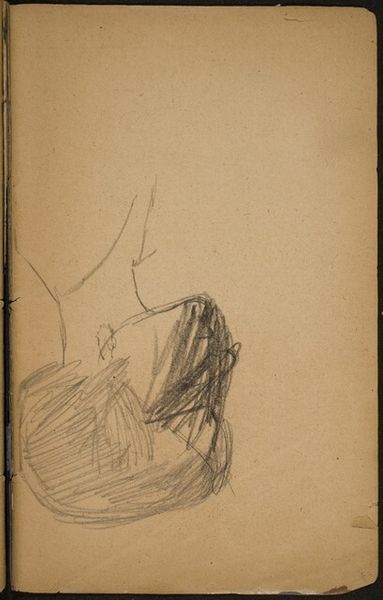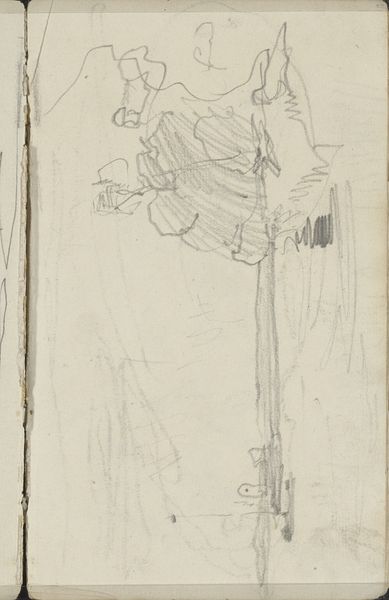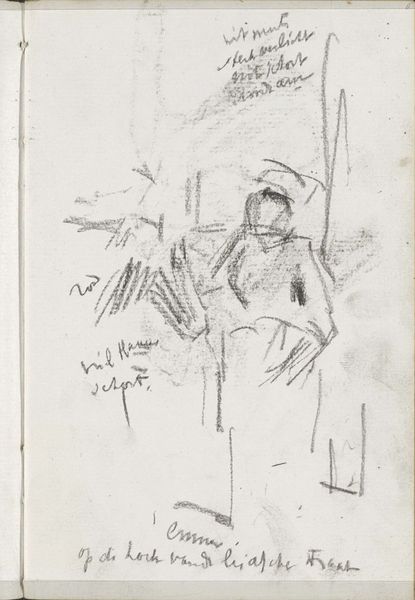
Staande man met stok en een koetsier voor twee aangespannen paarden c. 1886 - 1903
0:00
0:00
georgehendrikbreitner
Rijksmuseum
Copyright: Rijks Museum: Open Domain
Curator: What we have here is a graphite and pencil drawing from the Rijksmuseum, called "Standing Man with a Stick and a Coachman in Front of Two Horses," created by George Hendrik Breitner between approximately 1886 and 1903. Editor: My first impression is of arrested motion. Despite the subject of transport, there’s a quietness, almost a solemn stillness, evoked by the starkness and sketchy rendering. Curator: Breitner was, of course, known for his Impressionistic depictions of Amsterdam life, though he gravitated to these urban subjects more so than bucolic countryside scenes usually connected to that artistic movement. He found a vibrant subject for his work in the pulse of city streets. Editor: Exactly. The rapid strokes suggest an artist capturing a fleeting moment, and yet, the relative detail given to the central figure imbues it with a certain prominence and a potential symbolic weight. What is the cultural significance of a standing man? He seems rooted, observant—a witness to his own time. Curator: In fin-de-siècle Europe, we start seeing these figures appearing across artworks of that era—perhaps reflective of industrial society and people who become either spectators or cogs in the machineries of it. Even the coach implies hierarchy—those driven versus those standing by, immobile. The cane, it speaks to the figure’s place and possible engagement or disengagement from that world. Editor: Fascinating! The pencil markings almost look like glyphs; each mark bears symbolic weight—the man, the cane, the horses. There’s almost a coded meaning embedded. The lack of precise detail could signify an intention to remove specificity, giving this artwork a greater degree of universalism. Curator: I think Breitner captured, intentionally or otherwise, the human state— poised, observing, and ultimately marked by societal frameworks even while appearing as a detached subject. Editor: And the impressionistic style contributes, of course, to this tension—evoking an ephemeral moment that carries timeless symbolic meaning. Thanks for sharing your insight, that helped me engage and see it differently. Curator: Thank you. Examining how societal frameworks, personal encounters, and the quick strokes of daily life are intertwined opens new perspectives when viewing Breitner's art.
Comments
No comments
Be the first to comment and join the conversation on the ultimate creative platform.
